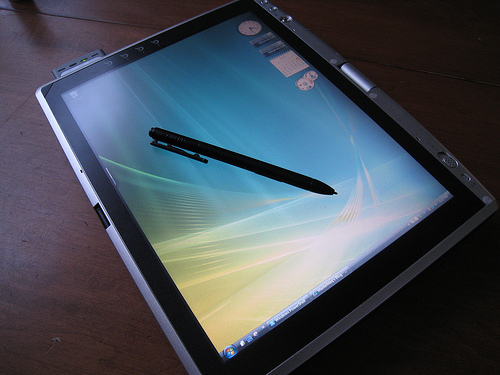If you’re a business owner, you’ve probably had to purchase IT equipment for your staff at some point and will be aware of the expenses that can be incurred. Today, with staff wanting enough latitude to be able to work from home or on-the-move, many of you will have been thinking of investing in laptops, or the like. However, this can often be more costly than purchasing desktop PCs of equivalent power and, in many cases, the work that most people will be doing away from the office won’t require this kind of power anyway. A smarter solution, perhaps, is to take advantage of cloud computing, and switch to tablets.
What is a tablet? It’s basically a smaller laptop without a keyboard; or a smartphone but bigger, faster, and without the phone. And at this point, they’re capable of doing almost anything you would do on a laptop: from writing documents, to making spreadsheets, checking emails, and discussing data models. They also have two major advantages when compared to laptops: they’re cheaper and can take full advantage of mobile networking technology. You’re guaranteed near-constant access to software and data on remote servers too, provided your IT department can join up the dots.
Tablets mean all of your employees can access vital data everywhere from highly portable devices. It also reduces the cost of individual units, as the major processing power and memory needed for specialist applications and data can be held centrally, or offsite on cloud servers. Anyone can access data and equipment as they need it; anyone can comment on or edit content as it is required; and everyone gets a cool looking piece of futuristic gear to fiddle around with for a lower overall cost. Almost sounds too good to be true, right? You’d be surprised.
Even if you don’t want to jump over to this model completely at first, the recent introduction of Windows 8 – a cost-effective operating system that operates on smartphone, tablet, and desktop PC platforms seamlessly – means that you can now integrate your old computer stock with newer tablets as you begin to make the transition. You can even adopt hybrid models that take the best from both worlds. When Software Defined Networking (the next big thing in intranet, designed to give you almost limitless ways of manipulating your devices’ connectivity) begins to really take off, you’ll be well placed to take advantage of increased levels of flexibility.
Flexibility is the watchword for modern businesses: when it comes to both technological capability and adaptability in evolving situations. The tablet-and-cloud approach will not only save you money, but give you excellent room to change tack whenever the need arises – you’ll be able to solve problems organically as they develop.
